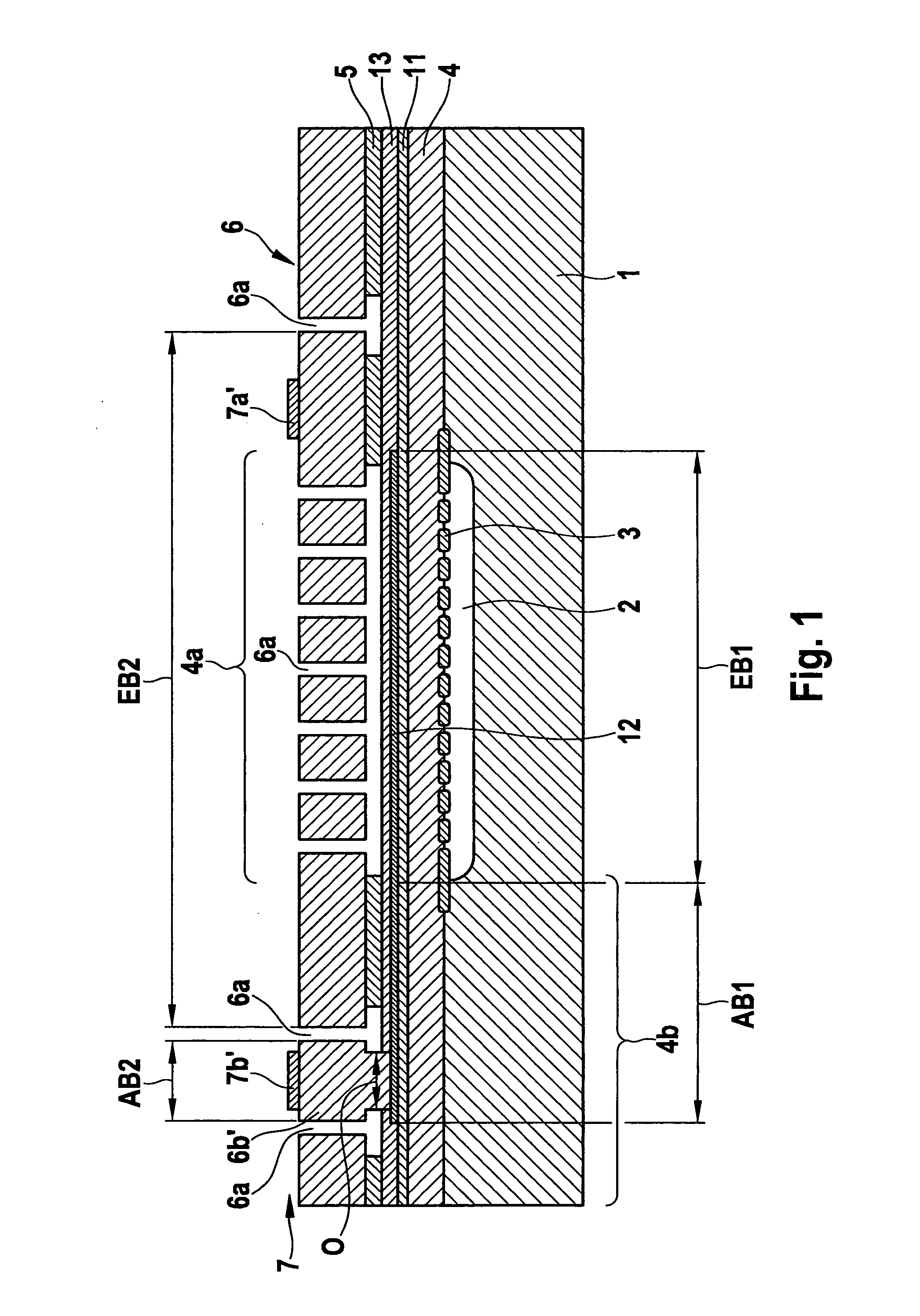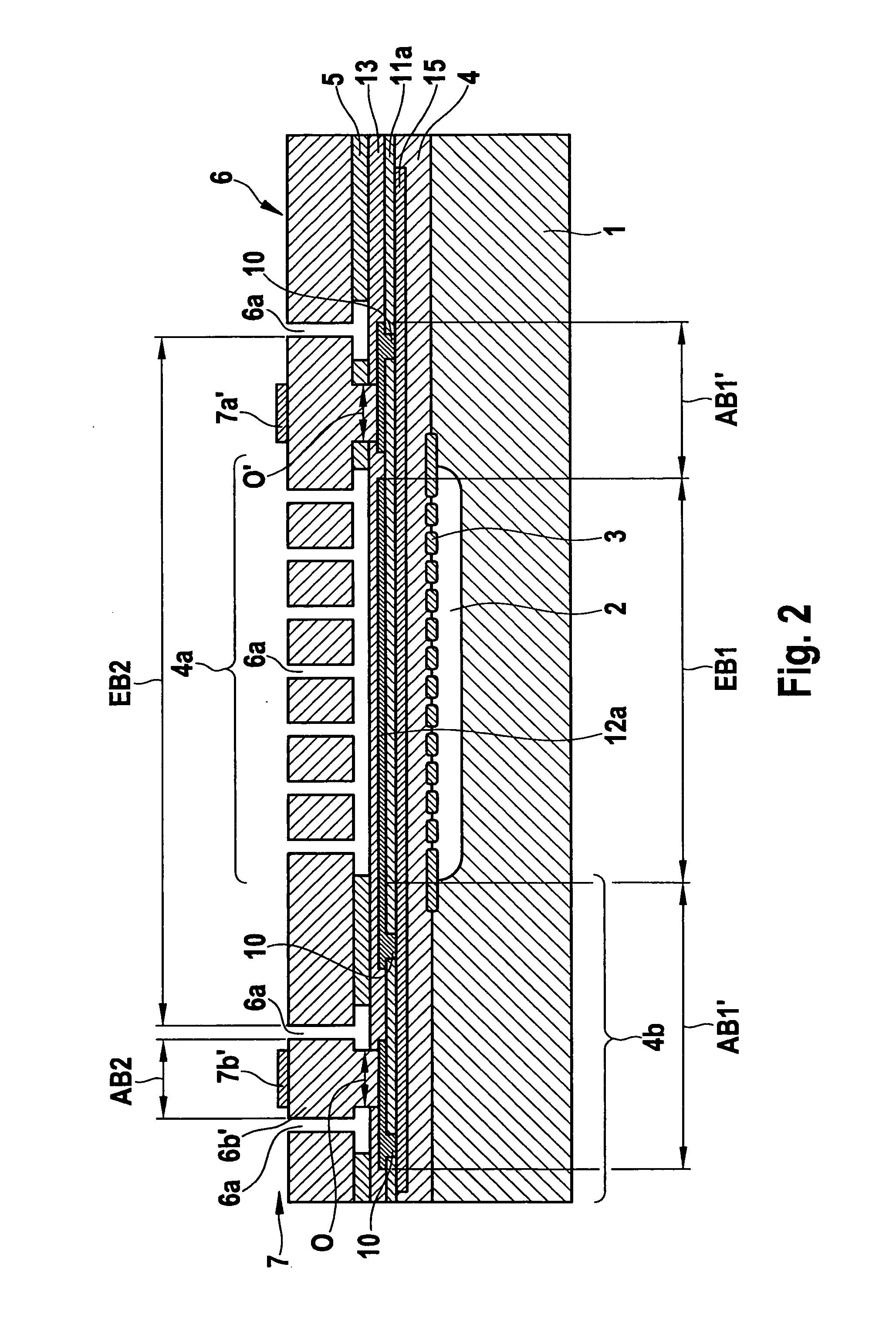Micromechanical component and corresponding production method
- Summary
- Abstract
- Description
- Claims
- Application Information
AI Technical Summary
Benefits of technology
Problems solved by technology
Method used
Image
Examples
Embodiment Construction
[0023]In the figures, like reference numerals designate like or functionally equivalent components.
[0024]FIG. 1 shows a schematic sectional view of a capacitive pressure sensor to explain the structure of a micromechanical component in the form of a capacitive pressure sensor according to a first specific embodiment of the present invention.
[0025]In FIG. 1, reference numeral 1 labels a conductive silicon substrate having a first conductive layer 4 of monocrystalline silicon, which is provided above substrate 1 and which forms, above a cavity 2 provided in substrate 1, an elastically deflectable diaphragm region 4a and an adjacent peripheral region 4b. As a result of the production process (see above regarding FIG. 6), a monocrystalline silicon lattice 3 is provided above cavity 2 between substrate 1 and first conductive layer 4, which also allows for a conductive layer 4 growing in a monocrystalline manner in diaphragm region 4a. A first insulation layer 11 of silicon oxide is provi...
PUM
 Login to View More
Login to View More Abstract
Description
Claims
Application Information
 Login to View More
Login to View More - R&D
- Intellectual Property
- Life Sciences
- Materials
- Tech Scout
- Unparalleled Data Quality
- Higher Quality Content
- 60% Fewer Hallucinations
Browse by: Latest US Patents, China's latest patents, Technical Efficacy Thesaurus, Application Domain, Technology Topic, Popular Technical Reports.
© 2025 PatSnap. All rights reserved.Legal|Privacy policy|Modern Slavery Act Transparency Statement|Sitemap|About US| Contact US: help@patsnap.com



